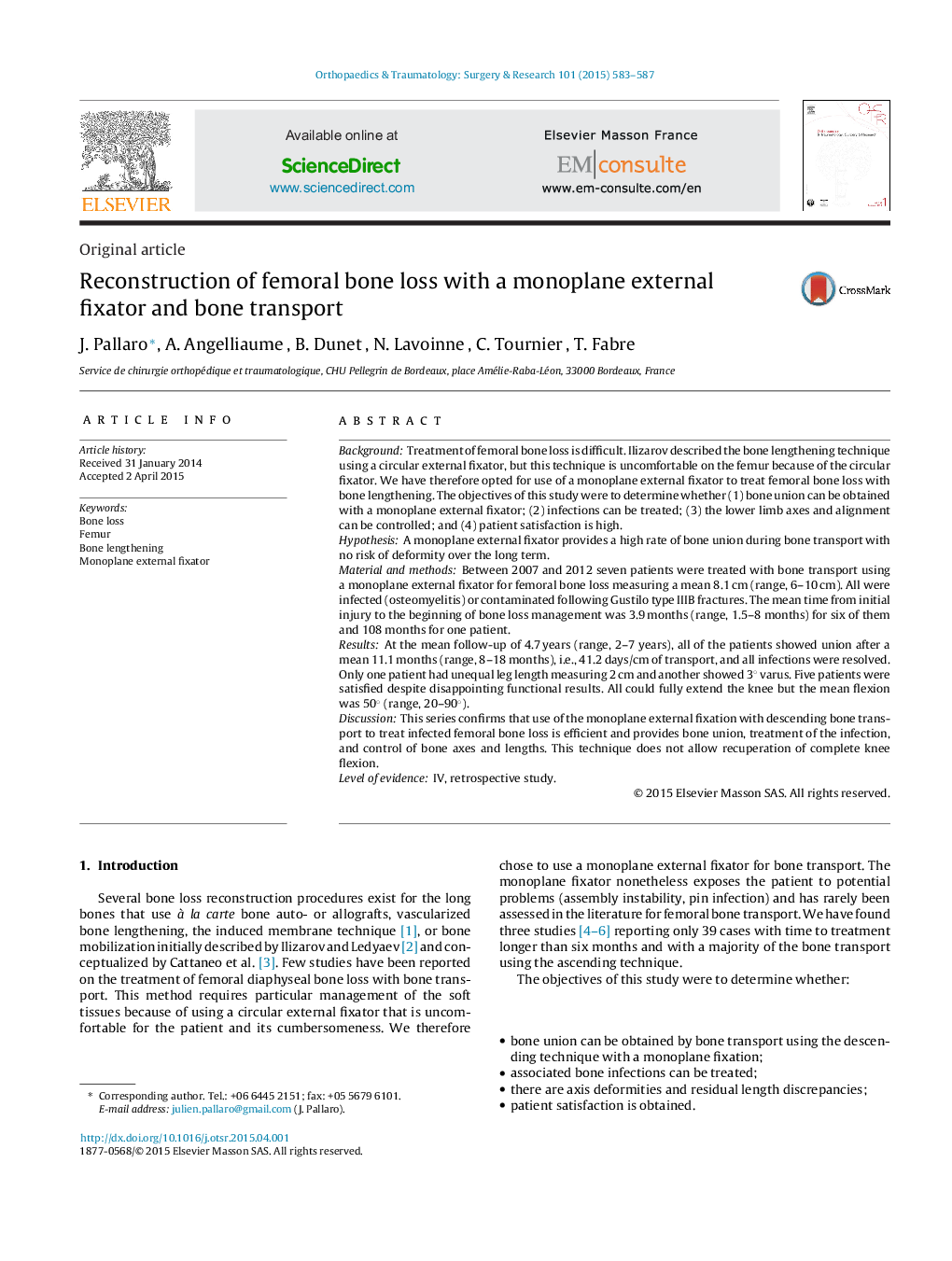| Article ID | Journal | Published Year | Pages | File Type |
|---|---|---|---|---|
| 4081049 | Orthopaedics & Traumatology: Surgery & Research | 2015 | 5 Pages |
BackgroundTreatment of femoral bone loss is difficult. Ilizarov described the bone lengthening technique using a circular external fixator, but this technique is uncomfortable on the femur because of the circular fixator. We have therefore opted for use of a monoplane external fixator to treat femoral bone loss with bone lengthening. The objectives of this study were to determine whether (1) bone union can be obtained with a monoplane external fixator; (2) infections can be treated; (3) the lower limb axes and alignment can be controlled; and (4) patient satisfaction is high.HypothesisA monoplane external fixator provides a high rate of bone union during bone transport with no risk of deformity over the long term.Material and methodsBetween 2007 and 2012 seven patients were treated with bone transport using a monoplane external fixator for femoral bone loss measuring a mean 8.1 cm (range, 6–10 cm). All were infected (osteomyelitis) or contaminated following Gustilo type IIIB fractures. The mean time from initial injury to the beginning of bone loss management was 3.9 months (range, 1.5–8 months) for six of them and 108 months for one patient.ResultsAt the mean follow-up of 4.7 years (range, 2–7 years), all of the patients showed union after a mean 11.1 months (range, 8–18 months), i.e., 41.2 days/cm of transport, and all infections were resolved. Only one patient had unequal leg length measuring 2 cm and another showed 3° varus. Five patients were satisfied despite disappointing functional results. All could fully extend the knee but the mean flexion was 50° (range, 20–90°).DiscussionThis series confirms that use of the monoplane external fixation with descending bone transport to treat infected femoral bone loss is efficient and provides bone union, treatment of the infection, and control of bone axes and lengths. This technique does not allow recuperation of complete knee flexion.Level of evidenceIV, retrospective study.
